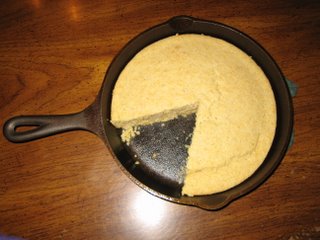 Susan Voisin gives me blogging envy. Her "Fat Free Vegan" blog is just too gorgeous for words. See for yourself! She's been posting for a year and has a devoted following, opening up the word of delicious vegan cooking with tantalizing recipes and amazing food photos. Susan lives with her husband, daughter and cats in Jackson, Mississippi.
Susan Voisin gives me blogging envy. Her "Fat Free Vegan" blog is just too gorgeous for words. See for yourself! She's been posting for a year and has a devoted following, opening up the word of delicious vegan cooking with tantalizing recipes and amazing food photos. Susan lives with her husband, daughter and cats in Jackson, Mississippi.Vegetarian or vegan?
Vegan
How long have you been veg*n?
Vegetarian for 19 years, vegan for 13.
What inspired you to go veg?
I've always been a big animal lover; in fact, my family always thought I'd grow up to be one of those old ladies with a hundred cats (which still may happen!). I had dabbled in vegetarianism and ate meatless meals fairly often, but the thing that finally made me give up meat completely was very mundane: I met someone at a barbeque who had brought her own veggie burger to eat instead of the beef burgers that everyone else was having. It was the first time I'd seen a veggie burger, and it hit me that with convenience foods like that around, it would be easy to go vegetarian. I made the decision to give up meat gradually -- as a poor grad student, I felt like I needed to eat the food I had in the freezer. But after reading more about how the animals were treated, I gave away all the meat in my fridge and went vegetarian right away.
What's your best story of trying to find veg food?
My family and I travel to some remote places on our vacations, and I have to say that we haven't had much trouble finding vegan food (especially since we usually pack our own). The funniest thing that's happened was in this little town in the middle of Texas, probably two hours from the nearest city. We noticed that it had a little Chinese/Thai restaurant, so my husband went in to see if there were anything vegetarian on the menu. There turned out to be two tofu dishes, so my husband ordered them for us. The waitress just looked at him and said, "You must not be from around here." No one had ever ordered the tofu before! But it turned out to be delicious. It just goes to show that you can find vegetarian food almost anywhere, if you look hard enough and are willing to look "different."
How do you handle family holiday dinners?
We're very lucky. Though my husband and daughter and I are the only vegetarians in our family, everyone goes out of their way to accommodate us. My mother always cooks a special vegan cornbread dressing for us and makes her vegetables without any animal products, and my in-laws always try to have a couple of dishes that we can eat. Since I love to cook, I'm happy to bring several vegan dishes for people to share. Last year, my vegan green bean casserole went more quickly than any other dish at my parents' Christmas dinner, and my in-laws really seemed to enjoy my sweet potato casserole at Thanksgiving.
What's your favorite veg food?
Oh no, do I have to pick one? I love everything! When I'm traveling, if I see a Thai or Ethiopian restaurant, I'll head to it because they are two of my favorite types of food and we just don't have them around here. For home cooking, I'd have to agree with my daughter that nothing beats lasagna.
Do you have a favorite veg book?
A couple of months after I became vegetarian, I saw John Robbins speak. His book "Diet for a New America" had just come out, and I bought a copy, which he signed for me. I learned so much from that book, and though I wasn't ready to go vegan right away, it provided a foundation that would later lead to my veganism. Although a lot of great books have come out since then, I have a sentimental attachment to "Diet."
Tofu or tempeh?
Definitely tofu! I mean, what else can you turn into an omelet, whip into a chocolate mousse, stir-fry with vegetables, and stuff with dressing for Thanksgiving dinner? It's the most versatile vegan food around.
What did you have for breakfast today?
Most mornings I have plain fruit, but I've been on a soy yogurt kick lately, so I've had soy yogurt mixed with berries for the last few days.









